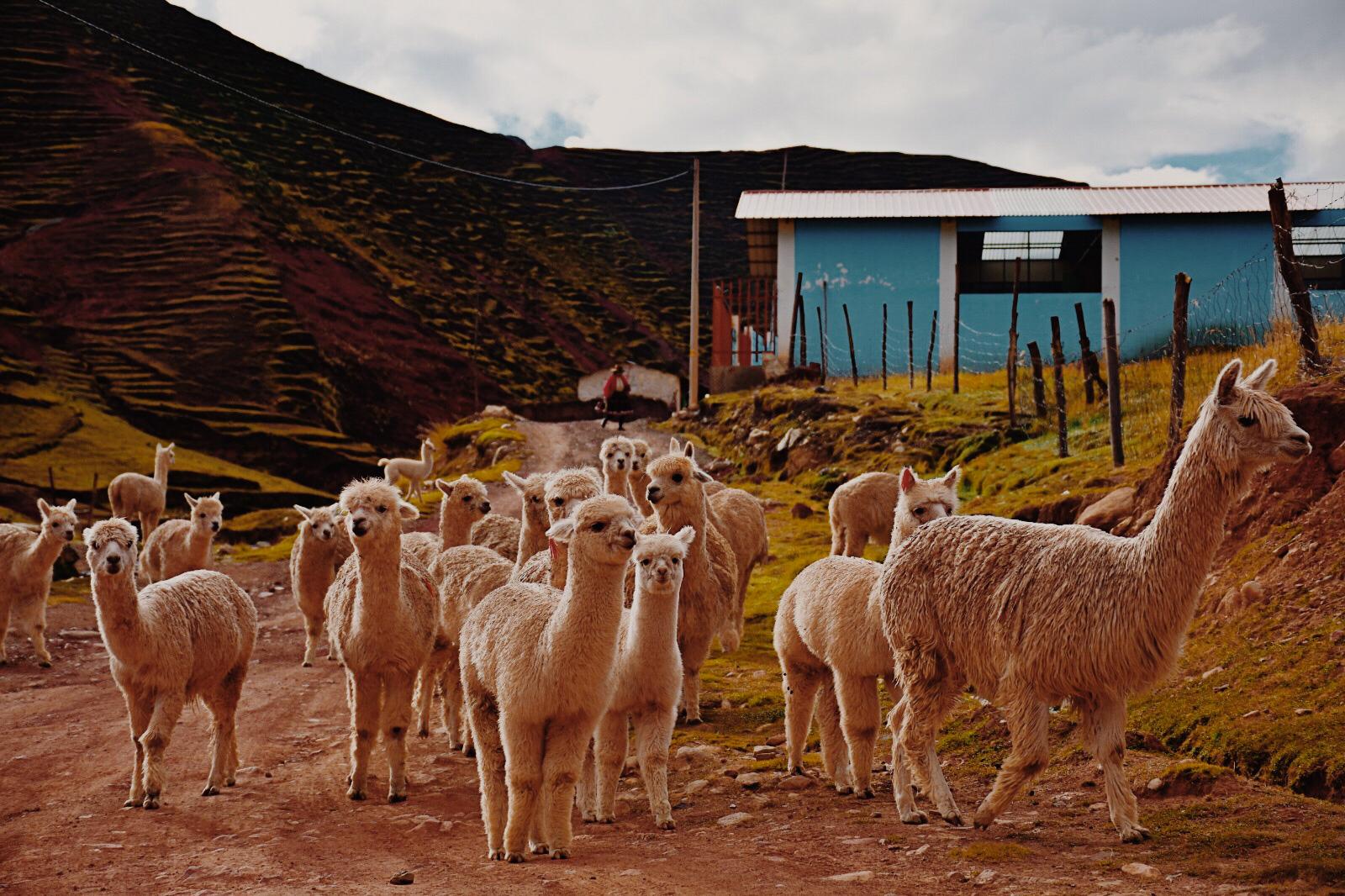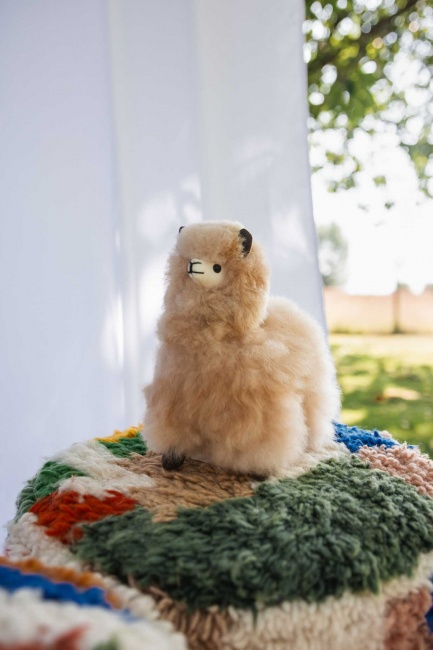Habitat of the alpaca
The alpaca, a camelid not like the others

The alpaca is part of the camelid family just as the dromedary, the guanaco, and the llama. With a height of 80 cm, it is the smallest of this family, but remains the most coveted species to produce fibers for clothing. It is an animal that is native to South America. It is found more precisely in the Andes Cordillera, particularly in Peru, Bolivia, Argentina and Chile. You will have understood it, the alpaca is an animal which evolves in an environment at high altitude. Many farms are located at more than 4 500 m of altitude in desert places where temperatures can vary, reaching more than 20 degrees during the day and 0 at night. However, for the last few years, we could find several alpaca farms all over the world; for example, in Canada, Switzerland, England, France and Germany. There are two types of alpacas: the huacaya and the suri. They are both distinguished by their fibers. The huacaya has a more wavy fiber like the sheep while the suri is finer and has longer hair.
The alpaca in its natural environment
The alpaca is an environmentally friendly animal. It is a rare species that does not pollute or damage the place where it lives. Contrary to sheep that uproot grass and damage it with their hooves, the alpaca has small pads on its legs which allow it to preserve its pasture and live in harmony with its environment. Thus, this way of feeding allows the alpaca to enjoy food and the whole pasture continuously without waiting for regrowth. This hoofed mammal is a fairly clean animal, in fact, it shares a place with the whole herd that is delimited and reserved precisely for its needs. This natural behavior makes it possible to avoid any type of disease caused by any parasites. Living at high altitude, this animal adapts to all climatic changes. Its coat thus enables it to protect itself from the cold and to adapt to strong heat.
Alpaca wool and its benefits

In addition to being an environmentally friendly animal, the alpaca fiber is considered to be one of the softest and warmest wools in the world. Internationally renowned, it is known to be a wool with wonderful benefits. Indeed, thanks to the natural environment in which the animal is raised, its fiber has a natural heat-regulating mechanism. In other words, this means that this wool will keep you at the right temperature according to the climate. You will stay dry without any worry of perspiration. Alpaca wool is also hypoallergenic. It keeps its authenticity and remains respectful of sensitive skin without lanolin. It differs from other wools not only by its rarity, but also by its resistance. Despite its thin thickness ranging from 16 to 25 micrometers, it is stronger and more durable than sheep wool. It is sheared and collected once a year, which makes the wool rare and incredibly luxurious, not only thanks to its lightness but also because of its softness, warmth and comfort. Having 22 natural colors from beige to dark brown, the alpaca fiber keeps its authenticity and is not modified.
You will have understood that alpaca wool is extraordinary. If you want to wear clothes made of alpaca wool as well, don't hesitate to visit our large collection of products for men and women made of alpaca wool at BellePaga.






